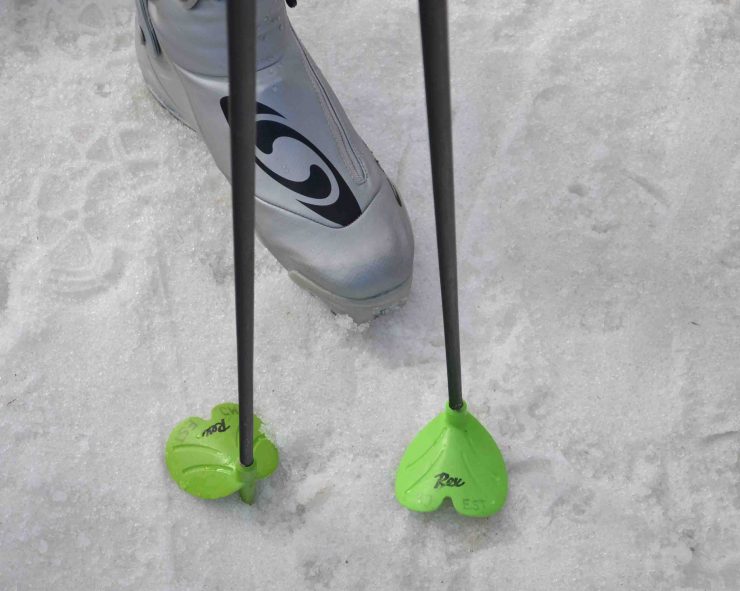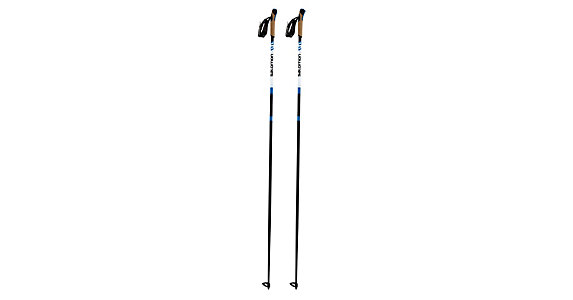Cross-country skiing, also known as Nordic skiing, is an exciting physical activity you can do on different terrain aside from the usual snow. It’s a daunting sport for many beginners due to the equipment. You need skis, boots, and of course, poles to keep you steady on the ground.
You don’t have to feel pressured to get the perfect gear for a grand and safe time if you’re starting skiing. Let this list be your guide in picking ski poles for your next time on the slopes:
- Consider Pole Height
You’re going to have a hard time moving around if your poles are twice your height. As a general rule, your ski poles must rest snugly under your armpits while you’re standing still. You can choose poles of this height if you plan to have one pair for now. They’re great for all kinds of courses except for hilly or flatter terrain.
You’ll need longer poles on flat courses for better propulsion, while you need shorter poles for hilly terrain. Whichever you plan on getting, check out a ski pole size chart before shopping for ski poles. The height will affect your momentum as you ski across vast terrains, so you have to choose a pair that’s right for you.
- Check Pole Materials
Ski poles can come in three materials: aluminum, composite, and bamboo. Which one you choose depends on how you’re going to use them.
Many ski poles are made of aluminum. They’re economical and durable, so they’re ideal for first-time skiers and cross-country skiing. However, they’re pretty heavy by design.
Composite ski poles have entire or partial carbon material shafts. Despite being much lighter than aluminum ones, they are more expensive. Competitive skiers and racers prefer these because of their lightness, which results in more speed.
Bamboo is a material that has the best of both worlds. They’re lightweight like composite poles but durable like aluminum ones. If you want your ski poles to be eco-friendly, then you can choose a pair made of bamboo. Many skiers also attest to how bamboo poles look better than the other two.
Contemplate how you ski and decide from there. You’ll want a pair of ski poles that you can hold on to for extended periods and that are sturdy enough not to break too quickly.
- Choose Comfort
Ski poles are tools, but you’ll be using them for as long as you’re on your skis. So, aside from planning your weekend ski kit, you need to find comfortable poles to use for cross-country skiing.
As a novice skier, you’d want to go for ski poles that have simple wrist straps and a flexible shaft. The type of strap and the stiffness of the pole shaft will affect your performance. There are two kinds of straps:
- Simple wrist strap: It’s large enough to slip in and out of your wrist. Because of its size, it’s more appropriate for beginners but not as precise as the gauntlet type.
- Gauntlet wrist strap: The straps are adjustable and are close to the hand as possible. Some poles even have clip-on straps that you can remove.
Meanwhile, pole shafts have three stiffness levels:
- Aluminum: This shaft is solid yet heavy and has minimal stiffness, which is comfortable for beginners.
- Fiberglass: This shaft is lighter and relatively stiffer but is pretty breakable.
- Carbon-fiber: This shaft is the lightest and has the best stiffness of the three. It absorbs vibrations better than the other two.
The grips on the poles are also essential. Like the straps, they come in two types:
- Plastic: Used chiefly by beginners, plastic grips are durable and keep insulation well. But they’re also less comfortable.
- Cork: Cork grips are more ergonomic; hence they’re more comfortable to hold. The downsides are they offer less insulation and don’t last very long.
Check for the classifications ‘beginner’ or ‘leisure’ when looking for poles. These labels will match your level of ski performance since they’re made to be as comfortable and as easy to handle by novice skiers.

- Think Of The Pole Tips And Baskets
When you go cross-country skiing, you’ll use poles that have semicircle baskets right above the bottom tip. These baskets stop the poles from sinking too deep into the snow.
Large baskets are ideal for deep or soft snow, while smaller baskets work best for hard-packed snow. Sizes can range from two to four inches. You can also find baskets of any size in different bright colors and designs, so try finding one that suits your taste.
It would be best if you didn’t forget the pole tips either. Before your skiing adventure, ensure that your new poles are sharpened well using a file or a Dremel tool. If you’re lucky, you can chance upon a pair that has screw-in tips for easier and faster swap-outs. They’re perfect for any last-minute tip changes, especially if you’re traveling to and from different areas and ski centers.
Security, Comfort, And Speed
Being particular with your ski poles is crucial if you want to enjoy cross-country skiing. Your poles are just as important as your skis and your cold-weather outfit. Beginners, especially, need to choose suitable poles to ensure security and comfort so they speed safely on the snowiest tracks.

